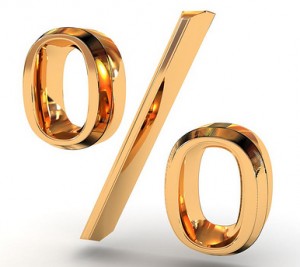
The ministry of statistics and programme implementation published the gross domestic product (GDP) data for India for the period July and September 2015, a couple of days back. The GDP, a measure of the size of the economy, grew by 7.4% during the period in comparison to the same period in 2014.
If we just look at this number then we have to conclude that the Indian economy is doing fabulously well. But other economic data clearly suggests otherwise.
The exports have been going down for the last 11 months.
The corporate earnings for the three months ending September 2015 saw a growth of less than 1%.
The real estate sector is down in the dumps.
The loan growth of banks has been in single digits for some time now.
The bad loans of banks continue to grow.
Two wheeler and tractor sales, a reflection of rural demand, fell during the first six months of the year.
The vehicle sales, a good reflection of urban demand, grew at a very low rate during the first six months of the year.
The number of stalled industrial projects continue to grow.
The factories are running 30% below capacity.
And India has seen two deficient monsoons in a row.
So how is the economy still growing at 7.4%? The answer might very well lie in the way the GDP growth is calculated. The 7.4% economic growth that we are talking about here and which the economists, politicians and regulators also talk about, is essentially the real GDP growth. The real GDP growth is obtained by subtracting inflation from nominal GDP growth.
For example, if the nominal GDP growth is 11% and the inflation is 4%, then the real GDP growth is 7%, to put it in a very simple way. This is essentially done to ensure that the GDP numbers across different periods of time are comparable, by removing the inflation component from the growth numbers.
The inflation number used in this case is referred to as the GDP deflator and it deflates the nominal GDP growth to the real GDP growth. As the Chief Economic Adviser Arvind Subramanian said in a recent interview to a television channel: “They actually only measure the wholesale and consumer prices, the GDP deflator is just constructed.” The GDP deflator typically falls between the inflation measured by the wholesale price index and inflation as measured by the consumer price index. Also, given that it is a combination of both the consumer price index and the wholesale price index, it is the most broad based measure of inflation.
During the period July to September 2015, the nominal growth came in at 6%. The GDP deflator on the other hand was at − 1.4%. This was primarily because inflation as measured by the wholesale price index number has been in negative territory for a while now. For the months of July, August and September, it stood at −4.05%, −4.95% and −4.54%, respectively.
The consumer price inflation on the other hand stood at 3.78%, 3.66% and 4.41%, respectively. Given that, the GDP deflator falls somewhere in between the inflation as measured by the consumer price index and the inflation as measured by the wholesale price index, it was at −1.4%.
Real GDP as explained earlier is obtained by subtraction the GDP deflator from the nominal GDP. And this led to a real GDP growth of 7.4% (6% − (−1.4%). Given that the GDP deflator was in negative territory, instead of deflating the nominal GDP number, it has ended up inflating it. And this explains how an economic growth rate of 7.4% has been arrived at.
The question that crops up here is why has inflation as measured by the wholesale price index been in the negative territory? One reason for this has been a fall in commodity prices, which has benefited the Indian economy. India is a huge importer of commodities like oil. On the flip side, a fall in exports, stagnant consumer and industrial demand, low private investment, etc., are also reasons of falling inflation as measured by the wholesale price index.
Over and above this, the Reserve Bank of India governor, Raghuram Rajan recently talked about the capacity utilisation of the factories being at 70%. This has been falling from levels of over 75% in January to March 2013. This suggests a significant slack in the economy. And it means that businesses really do not have pricing power. This is reflected in the more or less flat corporate earnings.
All these reasons have led to a negative inflation number as measured by the wholesale price index. This negative number has led to a negative GDP deflator and that in turn has led to an inflated real GDP number.
In simple English many economic factors which are negative for the economy have ultimately ended up becoming positive for the real GDP number. That’s the long and short of it and perhaps explains why the economy is “supposedly” growing by 7.4%, even though all real economic indicators suggests otherwise.
Further, economists Pranjul Bhandari and Prithviraj Srinivas economists at HSBC Securities and Capital Markets India, have raised some doubt regarding the reliability of the GDP deflator. As they write in a research note: “Nominal GDP…grew at a much slower clip than real GDP…implying that deflators have fallen sharply into the negative territory. Parsing through details throws up more questions than answers. We find that growth in services deflator, which is infamous for high and sticky prices, was actually running below the industry deflator. This is odd because manufacturing and industry at large should be the prime beneficiaries of falling commodity prices and as such should run below services (which is largely non-tradable) inflation.”
What they mean here is that the inflation in services was higher than inflation in manufacturing. This seems odd given that manufacturing should have benefited more because of falling commodity prices.
Due to this anomaly the HSBC economists suggest that the “real growth is lower than the headline reading suggests.”
The column originally appeared on The Daily Reckoning on Dec 2, 2015
